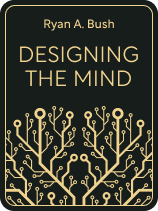

This article is an excerpt from the Shortform book guide to "Designing the Mind" by Designing the Mind and Ryan A Bush. Shortform has the world's best summaries and analyses of books you should be reading.
Like this article? Sign up for a free trial here.
Do you feel like you don’t have control over your emotions? How can you prevent negative emotions from poisoning your mind?
Many people live at the mercy of their emotions, so when difficult emotions arise, they succumb to them without question. But it doesn’t have to be this way: You have the power to change your emotional responses and prevent undesirable emotions from triggering.
With this in mind, here are some tips for dealing with difficult emotions.
How to Change Your Emotional Responses
Bush states that you can change your emotional responses by reevaluating how you think about situations that cause difficult emotions. Start by keeping a log of every undesirable emotion you experience. As you name each emotion, also write down the situation that triggered it and any thoughts you had before you felt it.
(Shortform note: In addition to logging your emotions and their triggers, consider writing down your physical experiences of different feelings. Emotions don’t just happen in your mind—they prompt physiological responses in your cardiovascular, neuroendocrine, skeletomuscular, and autonomic nervous systems. For example, you might feel hot and flushed when you’re angry, or you might feel nauseated and weak when you’re anxious. Logging when these physical sensations occur can help you pinpoint connections between feelings and events, and they can indicate how strong a feeling is.)
Over time, Bush notes, you’ll start to see patterns in the kinds of situations and lines of reasoning that lead to negative emotions: For instance, maybe almost every time you feel sadness, the emotion is preceded by self-deprecating thoughts. Once you’ve identified some of your patterns, you can start to rewrite them. Analyze the faulty thoughts and beliefs that lead to each undesirable emotion and come up with rebuttals for them. With this practice, you’ll get better at dealing with difficult emotions over time.
| Replacing Negative Thought Patterns vs. Ignoring Negative Thought Patterns As Bush argues, redirecting negative thought patterns and replacing them with positive ones can help you overcome emotions that don’t serve you. Some people might confuse this with thought stopping—actively watching for and banishing negative thoughts—but there’s an important distinction between these two practices. While challenging and redirecting negative thoughts acknowledges the negative thoughts and helps you identify alternative perspectives, thought stopping is when you attempt to ignore negative thought patterns entirely. This doesn’t work—when you suppress a thought instead of addressing it, it’ll most likely resurface even stronger, along with all of its accompanying emotions. Instead of ignoring your negative thought patterns, approach them mindfully by recognizing them without judging them. |
Faulty Reasoning Example: Your Friend Cancels on You
Let’s examine an example of how to deal with destructive emotions that are based on faulty reasoning. Say you have plans to go out with your friend, but they cancel at the last minute. They apologize and say that they’re just too busy at work, and you say it’s not a problem. Still, you’re left feeling frustrated and a little anxious. Instead of letting these unpleasant emotions inform your next interaction with your friend, you take a moment to understand where the feelings are coming from.
Right when you got your friend’s text, you had the thought, “If they’re canceling this late, they must be avoiding me because they’re upset with me.” You tried to think of anything you could have done to offend them, and when you couldn’t come up with anything, you felt frustrated with them and defensive. You also felt anxious because you don’t want to be in conflict with them. To get rid of these unproductive emotions, you find a rebuttal for your faulty thought patterns: Your friend has shown no other signs of being upset with you, and they previously told you how busy they’ve been at work long before they canceled. They were also adamant about rescheduling your get-together. This rebuttal soothes your anxiety and frustration—you realize that you don’t have to feel defensive or insecure because your friend’s choice is unrelated to your relationship with them.

———End of Preview———
Like what you just read? Read the rest of the world's best book summary and analysis of Designing the Mind and Ryan A Bush's "Designing the Mind" at Shortform.
Here's what you'll find in our full Designing the Mind summary:
- How the mind can be reprogrammed like a computer
- Strategies to help you change negative thought patterns, emotions, and behaviors
- How to eliminate your biases to perceive reality more accurately






